 W
WHistorical European Martial Arts (HEMA) are martial arts of European origin, particularly using arts formerly practised, but having since died out or evolved into very different forms.
 W
WCamillo Agrippa was a noted fencer, architect, engineer and mathematician of the Renaissance. He is considered to be one of the greatest fencing theorists of all time.
 W
WFrancesco Ferdinando Alfieri was a master of fencing of the 17th century, representative of the Venetian school of fencing and “Maestro D’Arme” to the Accademia Delia in Padua in 1640. Alfieri originally from Padua, at that time it was considered the territory of the Venetian Republic.
 W
WAncient Greek boxing dates back to at least the 8th century BC, and was practiced in a variety of social contexts in different Greek city-states. Most extant sources about ancient Greek boxing are fragmentary or legendary, making it difficult to reconstruct the rules, customs and history surrounding this activity in great detail. Still, it is clear that gloved boxing bouts were a significant part of ancient Greek athletic culture throughout the early classical period.
 W
WBem cavalgar, fully Livro da ensinança de bem cavalgar toda sela, is a book written by Edward of Portugal, left incomplete as Edward died of a plague in 1438. It is one of the oldest remaining manuals of medieval horsemanship and jousting. Together with Leal Conselheiro, the other book written by King Edward, the manuscript is kept at the French National Library, Paris. It is the basis of the curriculum at the Portuguese School of Equestrian Art, one of the Big Four riding academies.
 W
WThe Brotherhood of Saint Mark was the name of the most important organization of German swordsmen in the 16th century.
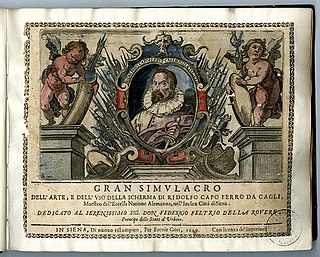 W
WRidolfo Capo Ferro da Cagli was an Italian fencing master in the city of Siena, best known for his rapier fencing treatise published in 1610.
 W
WEgerton Castle M.A., F.S.A. was a Victorian era author, antiquarian, and swordsman, and an early practitioner of reconstructed historical fencing, frequently in collaboration with his colleague Captain Alfred Hutton. Castle was the captain of the British épée and sabre teams at the 1908 Summer Olympics.
 W
W"Cloak and dagger" refers to situations involving intrigue, secrecy, espionage, or mystery.
 W
WCornish wrestling is a form of wrestling which has been established in Cornwall for several centuries. It is similar to the Breton Gouren wrestling style. The referee is known as a 'stickler', and it is claimed that the popular meaning of the word as a 'pedant' originates from this usage. It is colloquially known as "wrasslin" in the Cornish dialect. Shakespeare uses the term to refer to West Country wrestlers - "It is young Orlando, that tript vp the Wrastlers heeles..." in As You Like It, Act III, Scene II.
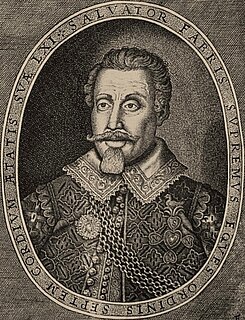 W
WSalvator Fabris (1544-1618) was an Italian fencing master from Padua. During his life he taught in various European countries, most notably in Denmark where he was the fencing instructor of King Christian IV. It was during his time in Copenhagen that he published his treatise on rapier fencing, Lo Schermo, overo Scienza d’Arme, in 1606. The treatise became a fencing bestseller around Europe, and was reprinted until 1713 and translated into several languages, notably into German, and again in 2005, into English.
 W
WThe Feder, is a type of training sword used in Fechtschulen of the German Renaissance. The type has existed since at least the 15th century, but it came to be widely used as a standard training weapon only in the 16th century, shown extensively in the fighting manuals of the time, particularly those of Paulus Hector Mair and Joachim Meyer, and it remained in use in such Fechtschulen well into the 17th, and in some cases for much of the 18th century.
 W
WThe Freifechter or Federfechter were a fencing guild founded around 1570 in Prague. They were known, from early in their existence, to be skilled, rivalling the Marx brothers who for the best part of a century had held a monopoly. In 1575 they were admitted by the council of Frankfurt in spite of the Marx brothers's protests, and on 7 March 1607, they were officially recognised by Rudolf II, although they had been acknowledged to be equally capable long before.
 W
WThe Flos Duellatorum is the name given to one of the manuscript versions of Fiore dei Liberi's illuminated manuscript fight book, written in 1410. There are five other surviving recensions, under the title Fior di Battaglia. Both Flos Duellatorum and Fior di Battaglia translate into English roughly as "The Flower of Battle," from Latin and Italian respectively.
 W
WThe known history of fencing in France begins in the 16th century, with the adoption of Italian styles of fencing.
 W
WThe German school of fencing is a system of combat taught in the Holy Roman Empire during the Late Medieval, Renaissance, and Early Modern periods, as described in the contemporary Fechtbücher written at the time. The geographical center of this tradition was in what is now Southern Germany. During the period in which it was taught, it was known as the Kunst des Fechtens, or the "Art of Fencing". Though the German school of fencing focuses primarily on the use of the two-handed longsword, it also describes the use of many other weapons, including polearms, daggers, messers, and the staff, as well as describing mounted combat and unarmed grappling.
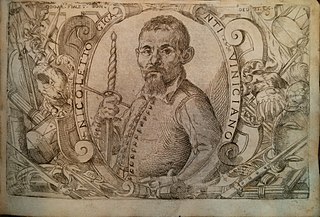 W
WNicoletto Giganti was a 17th-century Italian rapier fencing master. The frontispiece of his 1606 work names him as “Nicoletto Giganti, Venetian”, although evidence suggests he or his family, moved to Venice from the town of Fossombrone, in Le Marche, Central Italy.
 W
WGlima is the name that covers several types of Nordic folk wrestling practiced as sport and combat. In one common form of glima, players grip their opponent by the waist and attempt to throw them to the ground using technique rather than force. Other variants allow for more aggression.
 W
WGouren is a style of folk wrestling which has been established in Brittany for several centuries.
 W
WHastilude is a generic term used in the Middle Ages to refer to many kinds of martial games. The word comes from the Latin hastiludium, literally "lance game". By the 14th century, the term usually excluded tournaments and was used to describe the other games collectively; this seems to have coincided with the increasing preference for ritualistic and individualistic games over the traditional mêlée style.
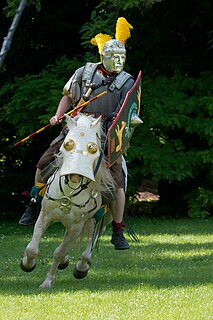 W
WThe hippika gymnasia were ritual tournaments performed by the cavalry of the Roman Empire to both practice their skills and display their expertise. They took place on a parade ground situated outside a fort and involved the cavalry practicing manoeuvring and the handling of weapons such as javelins and spears. The riders and their mounts wore highly elaborate armour and helmets specially made for display purposes, decorated with images from classical mythology. Such tournaments served several purposes, improving the riders' skills, helping to build unit morale and impressing dignitaries and conquered peoples.
 W
WThe term Italian school of swordsmanship is used to describe the Italian style of fencing and edged-weapon combat from the time of the first extant Italian swordsmanship treatise (1409) to the days of Classical Fencing.
 W
WArne Koets is a historical European martial arts practitioner and instructor from the Netherlands. Along with Guy Windsor in Finland, he is one of the few people that works as a full-time professional instructor in HEMA. He is a notable figure in the world of HEMA, being an expert in jousting and historical dressage. and runs seminars internationally. Koets has ridden in more than 400 tournaments, in ten countries, on three continents.
 W
WFiore Furlano de Cividale d'Austria, delli Liberi da Premariacco (Fiore dei Liberi, Fiore Furlano, Fiore de Cividale d'Austria; born ca. 1350; died after 1409, was a late 14th century knight, diplomat, and itinerant fencing master.
 W
WMasters of Defence or Masters of Fencing is a widespread guild of teachers specializing in close combat military techniques with weapons, civilian fighting skills, and unarmed combat. The title was coined during the Medieval period, and referred to men who were particularly skilled at the art of fighting.
 W
WDon Luis Pacheco de Narváez was a Spanish writer on the art of fencing.
 W
WPankration was a sporting event introduced into the Greek Olympic Games in 648 BC and was an empty-hand submission sport with scarcely any rules. The athletes used boxing and wrestling techniques, but also others, such as kicking and holds, joint-locks and chokes on the ground making it similar to modern MMA. The term comes from the Greek παγκράτιον [paŋkrátion], meaning 'all of power' from πᾶν (pan) 'all' and κράτος (kratos) 'strength, might, power'.
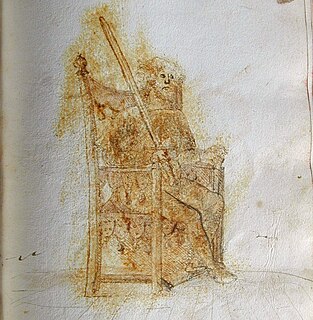 W
WSigmund Schining ein Ringeck was a German fencing master. While the meaning of the surname "Schining" is uncertain, the suffix "ain Ringeck" may indicate that he came from the Rhineland region of south-western Germany. He is named in the text of his treatise as Schirmaister to one Duke Albrecht, Count Palatine of Rhine and Duke of Bavaria. Other than this, the only thing that can be determined about his life is that his renown as a master was sufficient for Paulus Kal to include him on his memorial to the deceased masters of the Society of Liechtenauer in 1470. Ringeck seems to have authored one of the few complete glosses of the epitome of the grand master Johannes Liechtenauer, making him one of the most important German fencing masters of the 15th century.
 W
WRingen is the German language term for grappling (wrestling). In the context of the German school of historical European martial arts during the Late Middle Ages and the German Renaissance, ringen refers to unarmed combat in general, including grappling techniques used as part of swordsmanship.
 W
WRoyal Armouries Ms. I.33 is the earliest known surviving European fechtbuch, and one of the oldest surviving martial arts manuals dealing with armed combat worldwide. I.33 is also known as the Walpurgis manuscript, after a figure named Walpurgis shown in the last sequence of the manuscript, and "the Tower manuscript" because it was kept in the Tower of London during 1950-1996; also referred to as British Museum No. 14 E iii, No. 20, D. vi.
 W
WFencing master Vincentio Saviolo, though Italian born and raised, authored one of the first books on fencing to be available in the English language.
 W
WJoseph Swetnam was an English pamphleteer and fencing master. He is best known for a misogynistic pamphlet and an early English fencing treatise.
 W
WGérard Thibault of Antwerp was a Belgian fencing master and author of the 1628 rapier manual Academie de l'Espée. His manual is one of the most detailed and elaborate extant sources on rapier combat, painstakingly utilizing geometry and logic to defend his unorthodox style of swordsmanship.